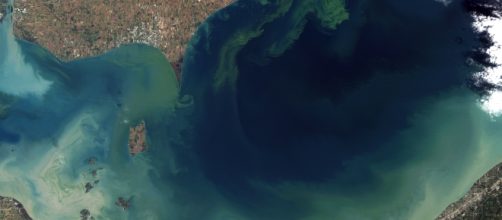In 2014, the water supply in Toledo was shut down for three days. In 2016, southern Florida faced a drinking water shortage, and four counties were declared to be in a state of emergency. These severe disruptions of essential services were not due to deadly enemy attacks but something much more insidious: toxic algae blooms. A new study published in Science journal reports that increasing precipitation due to global climate change will only worsen the problem.
‘Excess nutrients’ create dead zones
Toxic algae blooms are caused by excess amounts of nitrogen and phosphorus washing into water bodies.
The sources of the ‘excess nutrients’ are excess fertilizer from farms and lawns, waste from large scale animal feeding facilities and municipal sewage systems, and emissions from automobiles and coal- burning power plants.
Besides affecting the water supply, algae blooms also disrupt aquatic ecologies by creating vast dead zones, areas where nothing can grow. That's because when the algae decompose, they use up the oxygen in the water. This produces large hypoxic, low- oxygen areas known as dead zones, where any kind of life, plant or animal, is impossible.
The largest dead zones in the world, predictably, are found where major rivers that run through heavily farmed areas merge into large water bodies.
In North America, these include the Gulf of Mexico, the Great Lakes, and the Pacific Northwest and Atlantic coasts. The northeast and Midwest will be worst affected by the projected increase in Fertilizer Runoff, the study reports.
The impact of climate change
The article, titled ‘Eutrophication will increase during the 21st century as a result of precipitation changes’, shows that increased rainfall due to climate change will result in greater amounts of fertilizer washing into water bodies and eventually into the seas.
By the end of the century, the increase in fertilizer runoff could be as high as 19 percent, the study finds.
Unless farm management practices change drastically, the rise in algae blooms and dead zones will intensify the problems, leading to more water shortages, declining fisheries, and risks to public health. Solutions that can be implemented immediately include the use of riparian buffers to prevent fertilizer runoff, reducing fertilizer use in agriculture through precise application and limiting its use in landscaping, and sustainable disposal of animal and municipal waste.


